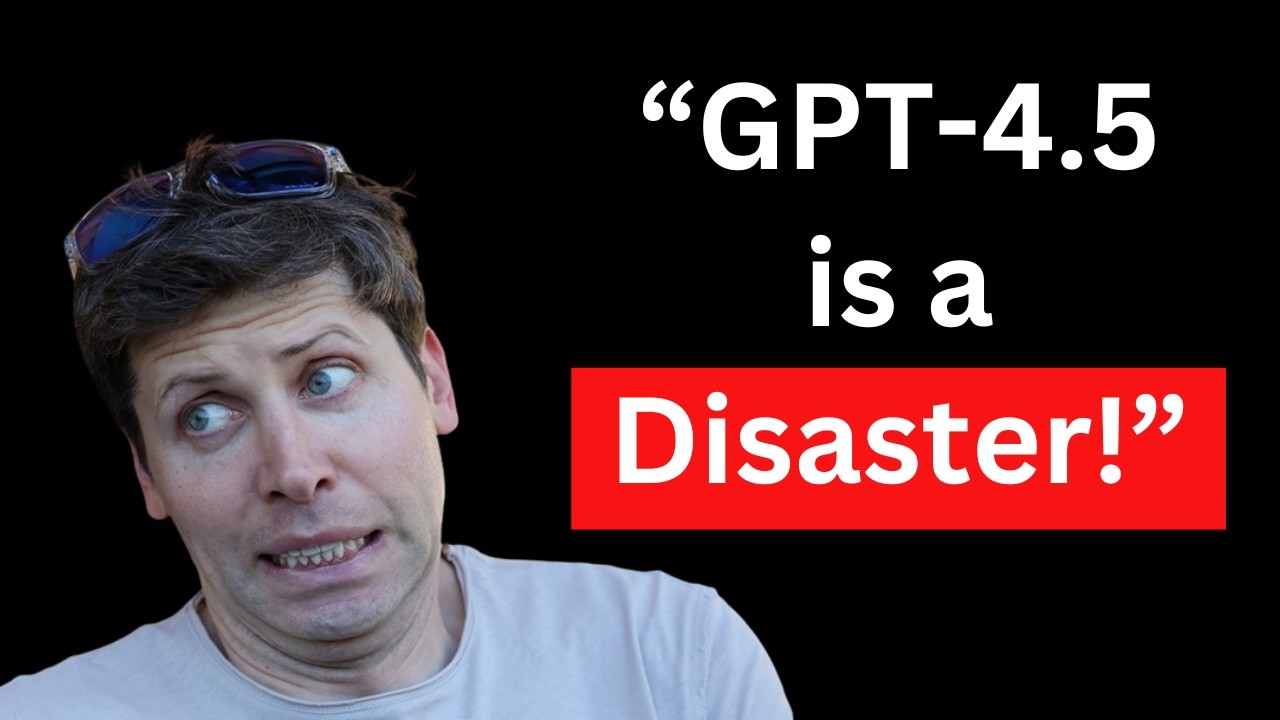The video critiques OpenAI’s GPT-4.5, highlighting its emotional intelligence and conversational improvements while questioning the necessity of its multiple models and the effectiveness of its presentation. Despite showing lower hallucination rates and better accuracy, the presenter argues that the advancements are marginal and may not significantly impact everyday use, while also noting the competitive landscape with upcoming models like DeepMind’s R2.
The video discusses the recent release of OpenAI’s GPT-4.5, which is now available to Plus users for a monthly fee of $20. The presenter critiques the multitude of models available, questioning the necessity of having so many variations, especially since GPT-4.5 is the most expensive model yet. The video also highlights the awkward presentation style of the official release, suggesting that the delivery could have been improved by having those who developed the technology present it instead of a scripted presenter.
A significant focus of the video is on the concept of “Vibes coding,” which involves interacting with the language model (LLM) using natural language to generate code. The presenter expresses skepticism about this approach, arguing that it may lead to a loss of clarity and personality in interactions. The video contrasts examples of responses from GPT-4.5 and earlier models, showcasing how the new version emphasizes emotional intelligence and social dynamics in its replies, which the presenter finds both intriguing and concerning.
The video critiques the initial demonstrations of GPT-4.5, pointing out that the examples provided were not particularly impressive. The presenter notes that while GPT-4.5 shows improvements in conversational abilities and emotional responses, it raises questions about whether these enhancements come at the cost of personality and directness in communication. The presenter also highlights some humorous moments from the official presentation, which detracted from the overall professionalism of the release.
Benchmark comparisons reveal that GPT-4.5 has a lower hallucination rate and higher accuracy in question-answering tasks compared to its predecessors. However, the presenter argues that the improvements are marginal and may not be significant enough to justify the hype surrounding the release. The video suggests that while GPT-4.5 is better at certain tasks, the advancements are not groundbreaking, and users may not notice a substantial difference in everyday applications.
Finally, the video touches on the future of AI, mentioning the anticipated release of DeepMind’s R2 model and its potential features, such as advanced coding abilities and multimodal functionality. The presenter speculates on the competitive landscape of AI, noting that while GPT-4.5 is a step forward, it may not be revolutionary. The video concludes by encouraging viewers to try GPT-4.5 for themselves, while also acknowledging the ongoing developments in the AI field and the emergence of new models like Gemini.
